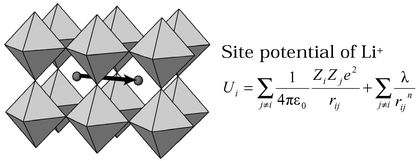Dependence of the lattice parameter and Li+ ionic conductivity on the B-site ion substitution in perovskite-related compounds (Li0.1La0.3)yMxNb1 −
xO3
(M = Zr, Ti, Ta) has been investigated. According to the calculation based on the classical ionic crystal model, ionic conductivity is expected to increase under the following two conditions: (i) a smaller average charge of B-site cations; and (ii) a larger unit cell. From the powder XRD results, Zr4+ substitution was satisfied with these two conditions. While in the case of Ti4+ substitution the former condition was satisfied, the latter one showed opposite tendency. In the case of Ta5+ substitution, both of the conditions are not changed. Therefore Zr4+-substituted samples were expected to increase the
ionic conductivity. However, the ionic conductivity of all the B-site substituted samples decreased with the amount of substitution, in particular, Zr4+-substituted samples showed the lowest ionic conductivity. This disagreement indicates that there is an additional factor affecting the ionic conductivity. We suggest three possible explanations: (1) local distortion introduced by cation substitution; (2) the change of B–O bond covalency; and (3) formation of short-range ordering with B-site substitution.

You have access to this article
 Please wait while we load your content...
Something went wrong. Try again?
Please wait while we load your content...
Something went wrong. Try again?


 Please wait while we load your content...
Please wait while we load your content...